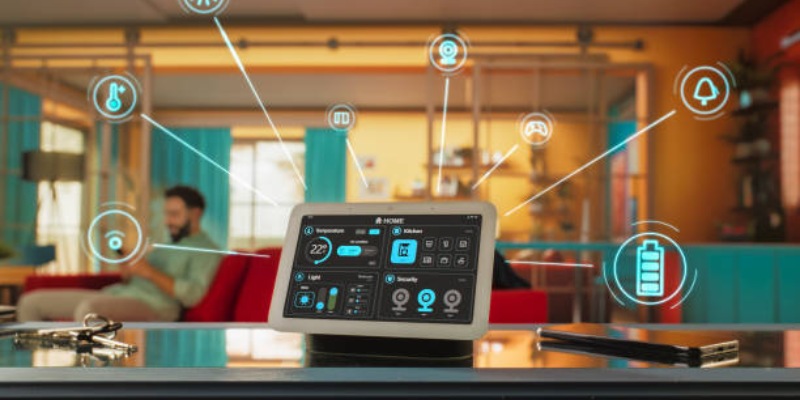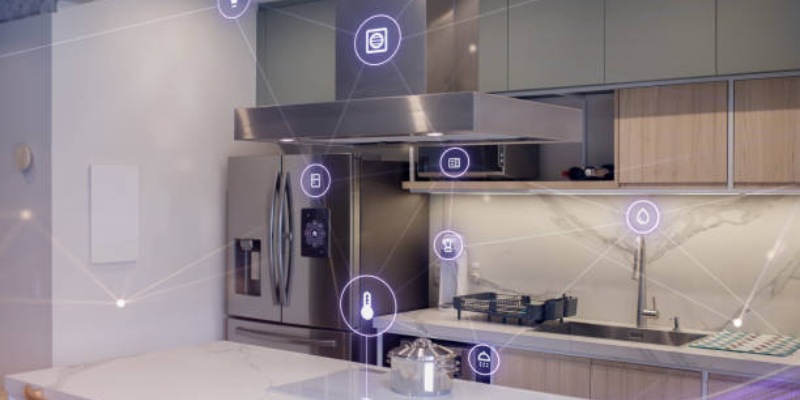How To Integrate Multiple Smart Devices Seamlessly
Smart homes aren't only a life of leisure and convenience. They are about designing a place where technology operates quietly in the background to make life easier. But before you jump feet-first into the smart-speaker, smart-light and smart-thermostat lifestyle, knowing the big picture is essential. You want every device you add to your home to fulfil a purpose, and that purpose should either be saving time, cutting your energy bills or enhancing safety.
Strategic Implementation of Home Automation
The first task is to decide which part of the house requires automation. Do mornings feel chaotic? Perhaps a smart alarm that changes the lighting and turns on the coffee maker could be helpful. Is the heating bill too high? The answer may be a smart thermostat that learns households' patterns. By spelling out goals, homeowners can avoid random gadgets that don't play nicely together.

It's also not a bad idea to be prepared for the future. Technology changes rapidly, and a popular device today might be obsolete in a couple of years. Opting for devices that offer long-term updates keeps the smart home up and running, offsetting the need for repurchase over time.
Choose A Central Hub
Imagine a home where the lights dim automatically when a movie starts or the air conditioner turns off when a window opens. These actions require devices to talk to each other; that is where a central hub comes in. Think of it as the brain of the smart home.
Some systems, like smart speakers or home automation platforms, come with built-in hubs, while others may need a separate device to connect everything. The key is to find a hub that supports multiple communication methods, such as Wi-Fi, Bluetooth, and Zigbee. This ensures compatibility across different brands and types of gadgets.
Having one central control point also means managing everything from a single app. No more switching between five apps to adjust the thermostat, check security cameras, or lock doors. A unified system makes life easier and reduces the chance of confusion or missed updates.
Prioritize Compatibility
Not all smart devices play well together. Some brands only work with their ecosystem, while others follow open standards. This can lead to frustration when a bright light refuses to sync with a voice assistant or a security camera fails to trigger an alarm.
To avoid headaches, research products before buying. Look for devices that support common platforms like Alexa, Google Assistant, or Apple HomeKit. These systems act as bridges, allowing gadgets from different companies to communicate.
Also, check if the device uses standard protocols. For example, Zigbee and Z-Wave are wireless technologies designed for home automation. They work across brands, making it easier to mix and match products. Wi-Fi devices are standard but can strain a home network if too many are connected simultaneously.
Invest In Reliable Internet
A smart home runs on data. Every command—turning off a light or checking a doorbell camera—travels through the internet. Devices may lag or stop working if the network is slow or spotty.
Upgrading to a high-speed router is a smart move. Mesh networks benefit large homes, as they use multiple nodes to spread coverage evenly. This ensures every corner of the house stays connected, even in basements or backyards.
Security should not be ignored either. A smart home collects personal data, from daily routines to video feeds. Using strong passwords, enabling two-factor authentication, and updating firmware can protect against hackers.
Use Voice Commands And Automation
Voice control is one of the most convenient features of a smart home. It allows hands-free operation, whether adjusting the temperature or requesting a weather report. However, all devices must recognize the same assistant for smooth voice commands.
Setting up routines can save even more time. For example, a “Good Morning” command could turn on lights, read the news, and start the coffee maker. A “Movie Night” scene might dim the lights, lower the blinds, and turn on the TV.
Automation takes this a step further. Devices can react to triggers like the time of day, location, or sensor data. A smart lock could unlock when a phone arrives home, or a sprinkler system could pause if it detects rain. These small touches make a home feel intuitive and responsive.

Watch Out For Security Risks
Every smart device is a potential entry point for cyberattacks. Hackers could access cameras, steal passwords, or even control locks. While this sounds scary, there are steps to reduce risk.
Start by creating a separate network for smart devices. Most modern routers allow this, isolating gadgets from computers and phones. This way, personal files remain safe even if a camera gets hacked.
Also, avoid cheap or unknown brands. Reputable companies invest in security updates, while lesser-known ones may leave devices vulnerable. Regularly check for firmware upgrades and turn off unused features like remote access.
Test Before Expanding
Filling a home with the latest gadgets is tempting, but rushing can lead to problems. Start with a few core devices, like a smart speaker, thermostat, and lights. Once these work well together, add more items gradually.
Testing each new device ensures it integrates smoothly. If a smart plug fails to respond to voice commands, it could be a compatibility issue. Troubleshooting early prevents bigger headaches later.
Patience pays off. Building a fully integrated smart home takes time, but laying a solid foundation means fewer repairs.
Consider Professional Help
DIY setups work for basic automation, but complex systems may need expert help. Electricians and smart home specialists can install devices safely, especially those requiring wiring or professional calibration.
Some companies offer setup services for specific ecosystems. For example, a store might help configure an intelligent security system or teach users how to use automation tools. This is especially useful for older homes needing rewiring or network improvements.
Stay Updated On New Tech
The smart home industry evolves quickly. New devices appear yearly, offering better performance, lower costs, and improved features. Subscribing to tech newsletters or joining online forums helps stay informed.
However, upgrading does not always mean buying the latest model. Sometimes, a software update adds new capabilities to existing devices. For example, a voice assistant might gain support for a new type of smart appliance without needing hardware changes.
Balance Cost And Quality
Smart home gadgets range from budget-friendly to luxury. While it is tempting to cut costs, cheaper devices often lack durability, security, or long-term support. Investing in trusted brands can save time by reducing replacements and repairs.
Look for sales or refurbished models to save. Some companies offer bundles, like a smart speaker and lights, at a discount. Also, compare subscription services. Some security cameras charge monthly fees for cloud storage, while others offer free local storage instead.
Keep It Simple
Too many devices can overwhelm even the most tech-savvy user. If adjusting settings feels like a full-time job, it is time to simplify. Remove gadgets that cause more trouble than they’re worth.
Focus on systems that work together effortlessly. A smart home should reduce Stress, not add to it. If a device requires constant troubleshooting, it defeats the purpose of automation.
Plan For Power Outages
Smart homes rely on electricity. During a blackout, some devices may stop working without a backup plan. Battery-powered gadgets, like smart locks or cameras, can keep running temporarily.
Consider a home battery or generator for critical systems like security alarms or medical devices. These ensure essential functions continue even when the grid goes down.
Optimise for Energy Efficiency
One of the most significant benefits of smart homes is saving energy. Smart thermostats adjust temperatures automatically, while energy monitors track real-time usage. However, these savings disappear if devices are poorly managed.
Set schedules for heating, cooling, and lighting. Use smart plugs to cut power to idle electronics, like gaming consoles or coffee makers. Over time, these small changes add to lower bills and a smaller carbon footprint.

Learn From Mistakes
Even the best-laid plans can hit snags. A bright bulb flickers after an update, or a voice assistant mishears commands. These issues are routine and often fixable.
Check online forums or manufacturer websites for solutions. Other users have already solved many problems. The service consistently underperforms; it may be worth replacing.
Enjoy The Benefits
When everything works together, a smart home transforms daily life. Lights adjust automatically, security systems offer peace of mind, and routines run smoothly. It is not just about convenience but creating a space that feels intuitive and personalized.
Anyone can build a seamless smart home by choosing compatible products, investing in a strong network, and planning for the future.
Getting Help For Technical Issues
Even the smoothest systems need occasional troubleshooting. Manufacturers often provide support through apps, websites, or customer service lines. Many offer step-by-step guides for common problems, like reconnecting a lost device or resetting a forgotten password.
Online communities are also valuable resources. Forums, YouTube tutorials, and social media groups connect users with experts and fellow smart home enthusiasts. Sharing experiences can uncover new tips or workarounds for tricky issues.
Staying Ahead Of The Curve
Technology will continue to change how people live. Voice control, artificial intelligence, and energy-saving innovations will shape the future of smart homes. Homeowners can enjoy these advancements by staying informed and adaptable without feeling left behind.
The journey to a seamless smart home is ongoing. It is not about having the most gadgets but finding the right tools that work together effortlessly. With patience and planning, anyone can create a space where technology enhances life instead of complicating it.